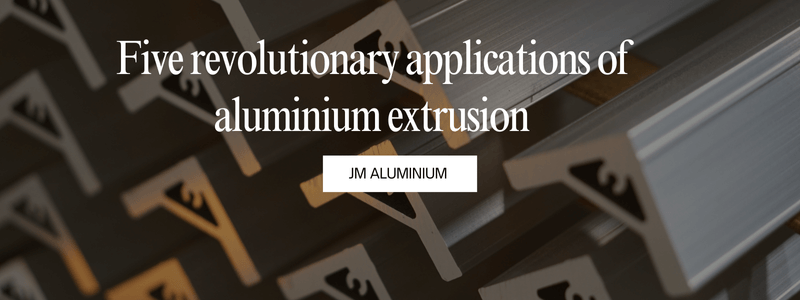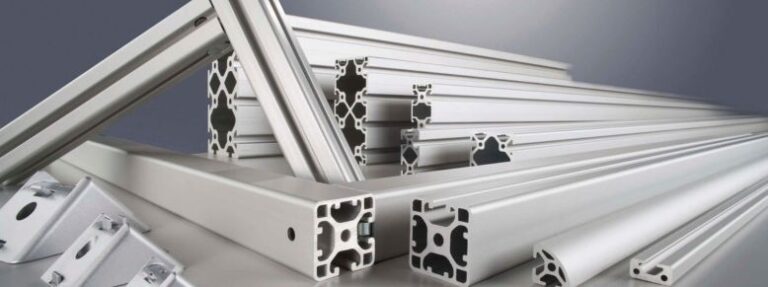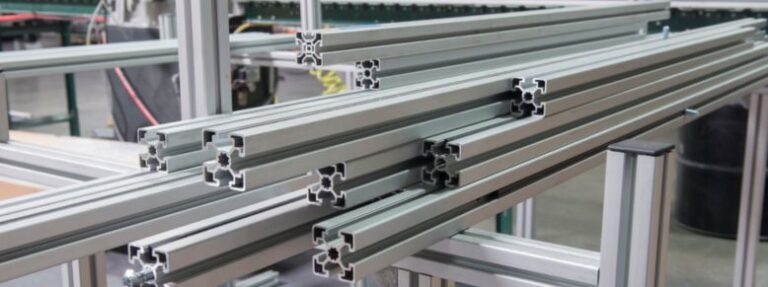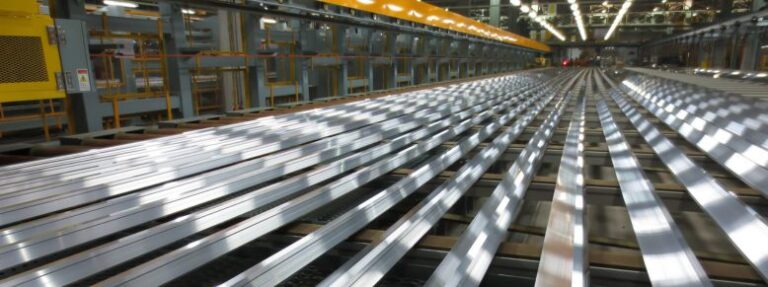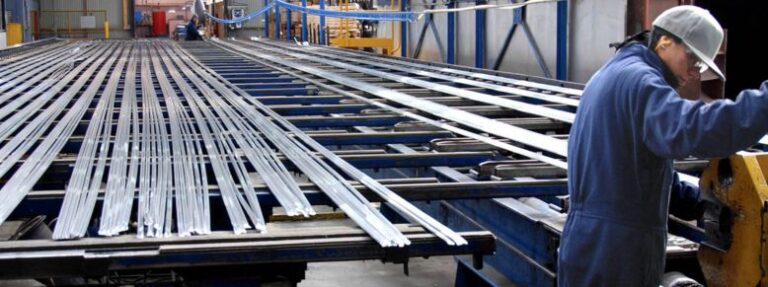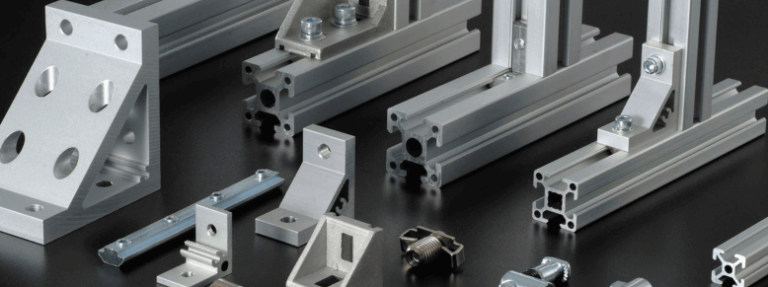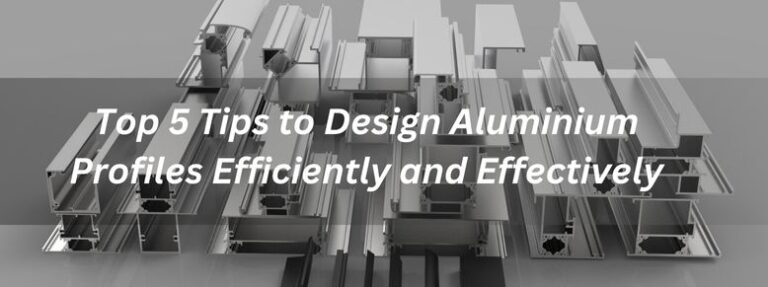Aluminium extrusion is a versatile manufacturing process that has been a staple in industries such as construction, automotive, and aerospace for decades. This technique involves forcing heated aluminium alloy through a die to create profiles with specific cross-sections. While many are familiar with its common applications, like window frames and car parts, the potential of aluminium extrusion extends far beyond these conventional uses. In this article, we’ll explore five unique and innovative applications that showcase the incredible versatility and benefits of aluminium extrusions.
Sustainable Urban Farming Systems
As cities grow denser and climate change threatens food security, urban farming has emerged as a promising solution. Aluminium extrusions are playing a pivotal role in this green revolution. Innovative companies are using extruded aluminium profiles to create modular, stackable hydroponic systems that can be installed on rooftops, balconies, and even walls.
These lightweight yet sturdy frames provide the perfect structure for vertical gardens, allowing plants to grow upward in limited spaces. The corrosion-resistant nature of aluminium makes it ideal for this wet environment, while its excellent heat dissipation properties help maintain optimal temperatures for plant growth. Some systems even integrate LED grow lights into the extruded channels, providing a complete, self-contained farming unit.
Wearable Exoskeletons for Medical and Industrial Use
Exoskeletons, once confined to science fiction, are now a reality thanks to aluminium extrusions. These wearable robotic suits enhance human capabilities, helping people with mobility issues walk again or enabling workers to handle heavy loads without strain. Aluminium’s high strength-to-weight ratio is a game-changer in this field.
Medical exoskeletons require a delicate balance of strength, flexibility, and lightness. Aluminium extrusion manufacturers are producing intricate, multi-chambered profiles that serve as the exoskeleton’s ‘bones.’ These profiles are strong enough to support a person’s weight yet light enough not to burden the wearer. Some designs even incorporate internal channels for wiring, hydraulics, or compressed air lines, keeping the suit’s ‘nervous system’ protected and organized.
In industrial settings, more robust aluminium extrusions are used. These heavy-duty profiles form the structure of exoskeletons that allow workers to lift loads many times their body weight. The profiles are engineered with reinforced walls and strategic ribbing to handle extreme forces without buckling. Despite their strength, they remain significantly lighter than steel alternatives, reducing user fatigue.
High-Efficiency Solar Desalination Plants
Water scarcity is a pressing global issue, particularly in coastal regions where seawater is abundant but undrinkable. An innovative solution is solar desalination, which uses solar energy to convert seawater into freshwater. Aluminium extrusions are making these systems more efficient and economically viable.
The key component is a specially designed aluminium heat sink. Unlike traditional flat-plate designs, these heat sinks use extruded aluminium profiles with a vast array of fine, closely spaced fins. This complex geometry, impossible to achieve with traditional manufacturing methods, dramatically increases the surface area. As a result, the heat sink can absorb and transfer solar heat much more effectively, boosting the desalination process’s efficiency.
Moreover, aluminium extrusion manufacturers are producing large structural profiles to create the desalination plant’s frame. These profiles are designed with built-in tracks to hold solar panels at the optimal angle and channels to guide water flow. Some even have reflective surfaces to concentrate more sunlight onto the panels. The entire structure is modular, allowing for easy transportation and rapid deployment in remote coastal areas.
Shape-Morphing Aircraft Wings
The aerospace industry is on the cusp of a revolution with shape-morphing wings that can adapt to different flight conditions, much like a bird’s wings. This technology promises better fuel efficiency, noise reduction, and manoeuvrability. Aluminium extrusions are at the heart of this innovation.
Engineers are using a combination of standard and custom aluminium extrusions to create a wing’s internal structure. Unlike traditional rigid spars and ribs, these components have a unique accordion-like design. When actuators apply force, the extruded parts can compress or expand, changing the wing’s curvature, twist, or even its overall area.
The precise control over the extrusion process allows manufacturers to produce profiles with varying wall thicknesses along their length. This feature enables different sections of the wing to have different flexibilities, mimicking the way a bird’s wing is stiffer near the body and more pliable at the tip.
Furthermore, some of these extruded components have internal passages for shape-memory alloy wires or hydraulic fluid. When heated or pressurized, these elements trigger the shape change. The aluminium’s excellent heat conductivity aids in this process, ensuring rapid and uniform temperature changes.
Self-Assembling Emergency Shelters
Natural disasters and humanitarian crises often create an urgent need for temporary housing. A groundbreaking solution is the self-assembling emergency shelter, a compact package that expands into a full-sized dwelling in minutes, thanks to the clever use of aluminium extrusions.
These shelters utilize a series of telescoping and folding aluminium sections. When compressed, they form a dense, easily transportable bundle. Upon release, internal springs and pivots—all integrated into the extruded profiles—cause the structure to unfold and lock into place automatically.
The extrusions are designed with a variety of smart features. Some have built-in hinges that allow panels to fold flat for storage. Others have interlocking edges that snap together, requiring no tools for assembly. There are even profiles with pre-installed tracks for hanging solar panels, water collectors, or privacy screens.
Aluminium’s light weight is crucial here, as it allows a small team or even a single person to handle the shelter. Its strength ensures the structure can withstand harsh conditions, while its reflective properties help manage interior temperatures. Some designs even use anodized aluminium in different colours to make shelters easily identifiable from the air.
Conclusion
These five applications barely scratch the surface of what’s possible with aluminium extrusion. From nurturing plants in urban skyscrapers to providing instant shelter in a crisis, the versatility of this technology is astounding. Its unique combination of strength, lightness, conductivity, and corrosion resistance opens doors to innovations that were once thought impossible.
For businesses and entrepreneurs, the message is clear: don’t be constrained by conventional thinking. Aluminium extrusions offer a world of possibilities limited only by your imagination. Whether you’re developing sustainable solutions, pushing technological boundaries, or addressing human needs, there’s likely an aluminium profile that can bring your vision to life.
Collaborating with experienced aluminium extrusion manufacturers is key to unlocking this potential. These experts can help you design custom profiles that integrate multiple functions into a single component, simplifying assembly and reducing costs. They can also help you choose the right alloys and finishes for your specific application.
As we’ve seen, the benefits of aluminium extrusions extend far beyond material properties. They enable modular design, facilitate rapid deployment, and support sustainable practices. In an era where innovation, efficiency, and environmental responsibility are paramount, aluminium extrusion stands out as a technology that delivers on all fronts.

